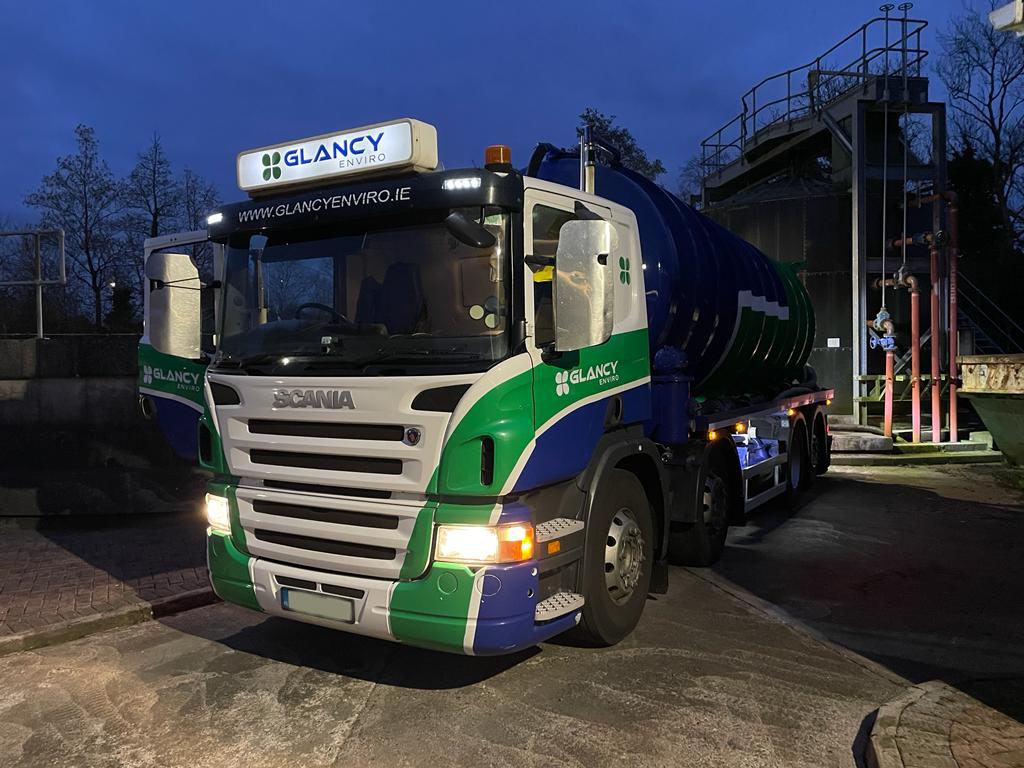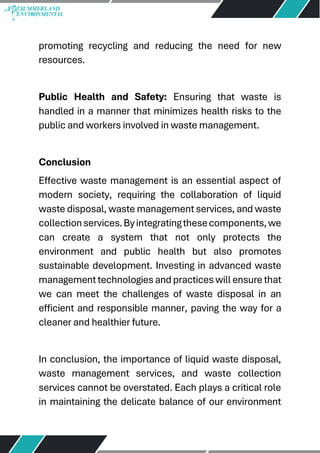Reclaim Waste Things To Know Before You Buy
Table of ContentsReclaim Waste - The FactsThe Single Strategy To Use For Reclaim WasteTop Guidelines Of Reclaim WasteThings about Reclaim WasteWhat Does Reclaim Waste Mean?
Domestic sewage waste refers to the waste and items from a household septic storage tank. The appropriate monitoring and disposal of residential sewer waste call for fluid waste to be transferred to a sewage therapy plant where the appropriate methods and tools are applied to purify and dispose of waste.
Business waste commonly includes prospective threats, such as flammable products or a blend of liquid and solid waste items, and requires a more innovative and in-depth disposal process. The disposal of industrial waste usually entails the filtration of waste before transportation to ensure safe and appropriate disposal. Hazardous waste is produced from byproducts and overflow of commercial processes and production.
This sort of waste can not utilize the exact same sewer administration transport or processes as septic or commercial fluids. The hazardous waste monitoring procedure calls for the inspection and screening of liquid waste prior to it undertakes the disposal procedure (liquid waste disposal melbourne). Overflow waste is the liquid waste that comes from runoff and excess stormwater in extremely populated locations or cities
Overflow waste can trigger contamination and flooding if not dealt with appropriately. Guaranteeing proper waste management can stop disasters and minimize environmental harm.
What Does Reclaim Waste Do?
Get in touch with PROS Services today to discover our waste administration and disposal services and the appropriate methods to look after the fluid waste you create.
(https://reclaimwaste1.mystrikingly.com/blog/efficient-liquid-waste-disposal-in-melbourne-why-reclaim-waste-is-your-go-to)Do you know what takes place to your water when you pull the plug, flush the commode or drain pipes the washing equipment? No? Well, it deserves understanding. This supposed 'wastewater' is not only a vital resource however, after therapy, will be released to our land, rivers or the sea. Used water from commodes, showers, baths, kitchen sinks, washings and industrial procedures is understood as wastewater.

water utilized to cool down machinery or tidy plant and devices). Stormwater, a kind of wastewater, is overflow that flows from farming and city areas such as roofing systems, parks, yards, roads, paths and gutters right into stormwater drains pipes, after rainfall. Stormwater moves without treatment directly to local creeks or rivers, at some point reaching the ocean.
5 Simple Techniques For Reclaim Waste
In Queensland, a lot of wastewater is dealt with at sewer therapy plants. Wastewater is carried from residential or industrial websites via a system of sewage systems and pump stations, understood as sewage reticulation, to a sewer therapy plant. Neighborhood governments build, maintain and run most sewer therapy plants. Operators are licensed under the Environmental Management Act 1994 to release cured wastewater at an appropriate ecological requirement into waterways.
The Division of Natural Resources suggests neighborhood federal governments concerning handling, operating and preserving sewage systems and therapy plants. In unsewered locations, city governments might require householders to set up private or home sewage therapy systems to treat domestic wastewater from commodes, cooking areas, shower rooms and laundries. The Department of Natural Resources authorizes using family systems when they are verified to be efficient.
In some brand-new communities, therapy of some stormwater to remove clutter, sand and gravel has actually begun making use of gross pollutant traps. Wastewater treatment happens in 4 phases: Gets rid of solid issue.
Wastewater then moves right into large storage tanks where solids resolve and are eliminated as sludge. Oil and scum are skimmed from the surface. Makes use of small living microorganisms recognizes as micro-organisms to break down and get rid of remaining dissolved wastes and great fragments. Micro-organisms and wastes are incorporated in the sludge. Eliminates nitrogen and phosphorus nutrients that could trigger algal blossoms in our waterways and threaten water life.
The Ultimate Guide To Reclaim Waste
Nutrient removal is not readily available whatsoever sewage treatment view it plants since it needs costly specialist devices. It is ending up being a lot more typical in Queensland. Clear fluid effluent produced after treatment might still consist of disease-causing micro-organisms. If this effluent is launched into waterways such as rivers or the sea, the micro-organisms will eventually pass away out.

Most wastewater moves into the sewerage system. Under the Act, neighborhood governments provide approvals and licences for ecologically relevant activities (Periods) involving wastewater launches that might have a neighborhood effect.
Reclaim Waste Fundamentals Explained
Or else, examples are taken for lab analysis. Commonly many examinations are needed to establish the degrees of each of the various toxins such as oils, heavy metals and chemicals in water. Surveillance provides accurate details regarding water quality and can confirm that licence conditions are being fulfilled. The information obtained with monitoring gives the basis for making water top quality decisions.